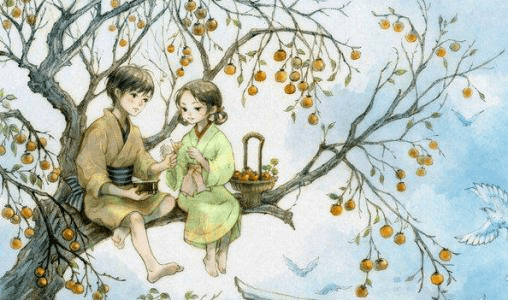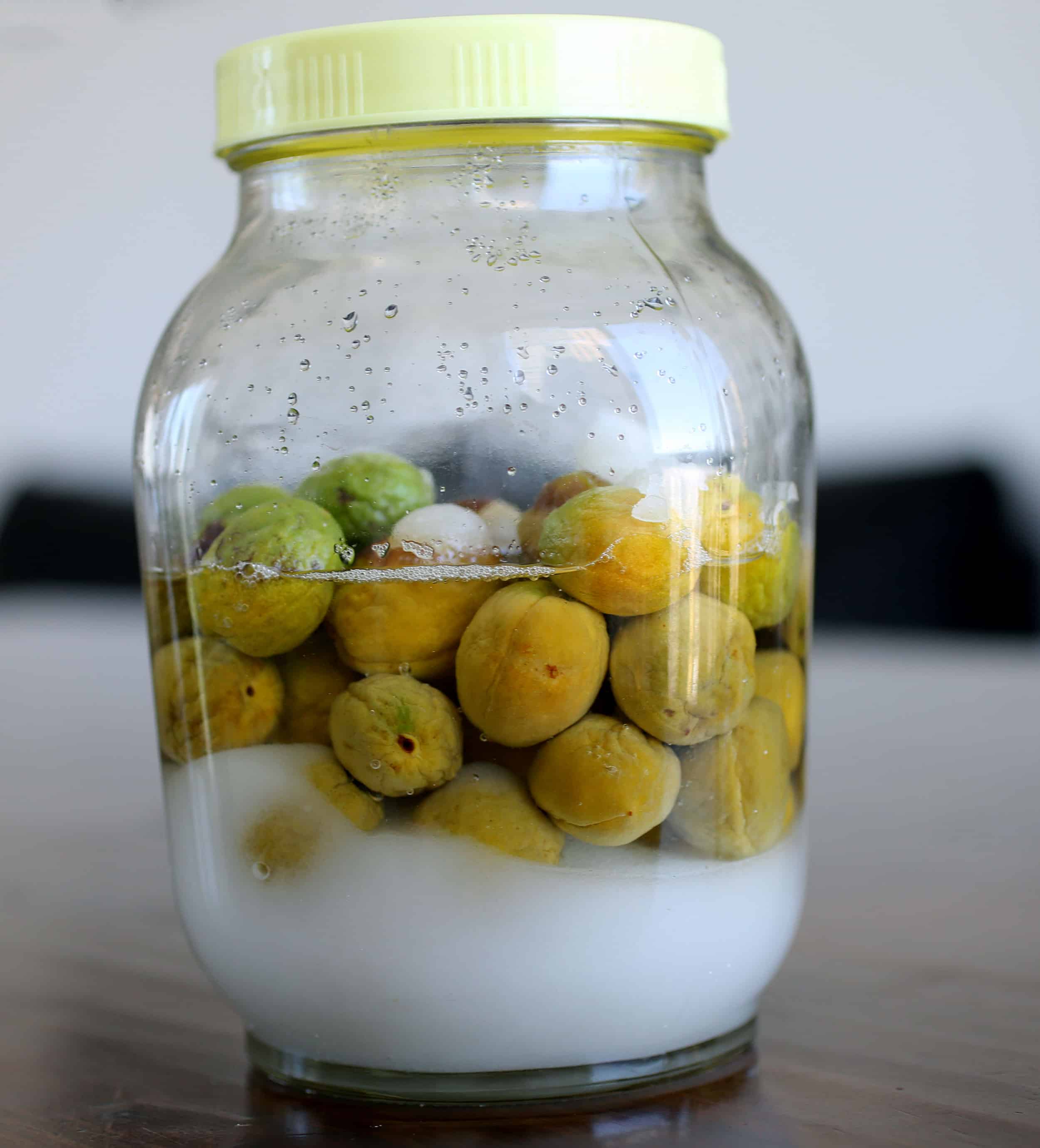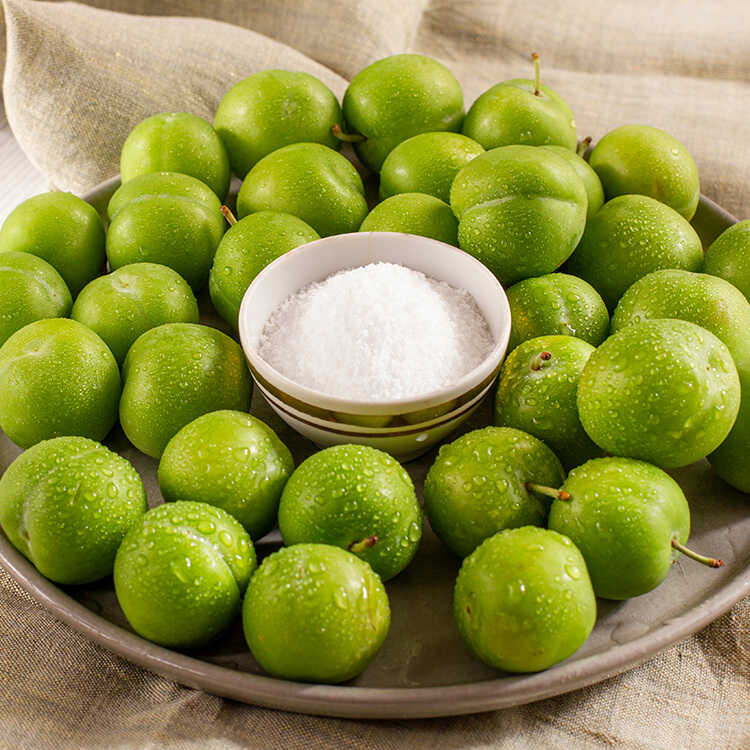Green Plums in Literature and Folklore: The Fruit of Nostalgia and Love
Introduction
Today, I went sightseeing around my lovely village, soaking in the gentle breeze and the charm of early summer. As I walked past familiar paths, I stumbled upon something quietly beautiful, a green plum tree, its branches heavy with tart little fruits. That moment made me pause. It was a soft, nostalgic reminder: the season of green plums has arrived.
But green plums are more than just a sign of changing seasons. Across East Asia, these humble fruits have ripened not only in gardens but also in hearts and poetry, infused with layers of cultural meaning, medicinal history, and timeless tales of love and longing. From Chinese literature to Japanese warrior lore and Korean folk medicine, the green plum has been cherished for centuries, making it much more than just a seasonal treat.
What Are Green Plums?
Green plums are typically the early, unripe form of Prunus mume, a species of flowering plum native to East Asia. While not as sweet as their ripened counterparts, these sour fruits are commonly used to make pickles, syrups, wines, and medicinal tonics. Known as:
- 青梅 (Qīng méi) in Chinese
- 梅 (Ume) in Japanese
- 매실 (Maesil) in Korean
- มะกอก (Ma-kok) in Thai (although botanically different, often enjoyed similarly)
Their tartness has made them a beloved seasonal ingredient, and a cultural icon.
Green Plums in Chinese Literature: Childhood Sweethearts & Nostalgia
One of the most poetic associations of green plums comes from the Chinese idiom “青梅竹马” (qīng méi zhú mǎ), which literally translates to “green plums and bamboo horses.”
This phrase originates from a poem by Li Bai (李白), the famous Tang Dynasty poet. It paints a picture of two childhood friends, sharing green plums and riding on toy bamboo horses, who grow up together and eventually fall in love.
“We picked green plums by the side of the well,
We rode on bamboo horses, circling the trees of the courtyard.”
– Li Bai
 |
| Credit: sohu.com |
This imagery has become a metaphor for innocent, enduring love that begins in youth. In modern Chinese, the idiom is still used to describe first loves or long-standing emotional bonds.
Japan: Ume and the Spirit of Resilience
In Japan, the green plum or ume is more than a culinary ingredient. It is a symbol of protection, endurance, and renewal.
The ume tree blooms in late winter or very early spring, often before the snow melts. Its delicate pink or white blossoms are seen as a metaphor for resilience in adversity. Historically, umeboshi (pickled plums) were carried by samurai for stamina and as a preventative against fatigue and disease.
There’s also a belief that plums ward off evil. During the Heian period, plum branches were placed outside homes as talismans during seasonal rituals. Even today, umeboshi is placed inside onigiri (rice balls) not just for flavor but also as a nod to tradition and protection.
 |
| Credit: dosiabrewer.com |
Korea: Maesil, the Healing Plum
In Korea, maesil has long been used in traditional medicine. The fermented plum syrup (maesil-cheong) is considered a powerful natural remedy for digestive issues, fatigue, and food poisoning.
Folklore often praises its healing properties, with some old Korean sayings suggesting that “Maesil can cure a hundred diseases.” It is also associated with the cycle of renewal, as the fermentation process transforms the sharp, sour fruit into something sweet and beneficial, echoing deeper life themes of transformation and growth.
Korean historical records from the Joseon Dynasty show recipes for maesil wine (maesil-ju), used both for drinking and ceremonial purposes.
 |
| Credit: maangchi.com |
Thailand: The Sour Joy of Ma-Kok
While the Thai ma-kok is botanically different, it shares the same seasonal and cultural function. Eaten with chili-salt-sugar dip, it’s a snack that evokes schoolyard nostalgia and the joy of craving sour things on a hot afternoon.
Though less steeped in literary folklore than its East Asian cousins, the ma-kok is undeniably tied to emotion and memory, a reminder of simpler times, childhood cravings, and community rituals.
 |
| Credit: gourmeturca.com |
Scotland: “Soor Ploom” & Bullace
- Soor Ploom: A tart, green boiled sweet originating in Galashiels since 1337. Legend says it commemorates locals defeating English raiders who were caught eating wild sour plums. The sweet remains popular folk nostalgia and even gave its name and tune to the town.
- Bullace: A wild plum native to the UK, often green or black. Known historically for cooking, rasps, pies, preserves, and used in wine-making. Celebrated in harvest-time meals.
France and Wider Europe: Greengage & Perdrigon
- Greengage (Reine Claude): Believed to be introduced to England by Sir William Gage in the 1700s. The French name “Reine Claude” honors Queen Claude of France. Celebrated for its honey-like sweetness; grown widely from the UK to Eastern Europe .
- Perdrigon: A traditional French plum from southern regions. The fruit is small and greenish, even used for drying into “pistoles” named after historic coins. Documented as early as 1726.
Eastern Europe & Romania: Literary Symbolism
- In Herta Müller’s novel The Land of Green Plums, the fruit symbolizes political oppression and childhood violation. Romanian police are described as stealing them off trees, a metaphor for greed and brutality under a totalitarian regime.
- Across the Balkans, plums are so culturally central they inspire national pride. For instance, Serbia boasts over 40 million plum trees, plums are central in rakija (plum brandy), dams, jams, and dumplings. “Where a plum tree will grow” is considered an ideal place to live (theculturetrip.com).
Why Green Plums Matter: A Bittersweet Legacy
In an age of instant gratification, green plums offer something beautifully different. Their sourness teaches us patience. They invite us to embrace transformation, through fermentation, through tradition, through memory. We learn to love their sharpness over time, just like we grow into the appreciation of old stories, first loves, and the quiet beauty of things that endure.
Across cultures, green plums are far more than seasonal fruit. They are vessels of nostalgia, symbols of resilience, and carriers of emotional weight. Whether it's childhood friendships in Chinese poetry, warrior endurance in Japan, healing tonics in Korea, or playful snacks in Thai schoolyards, each bite carries layers of meaning.
In Europe, too, green plum varieties, like the wild bullace, the honey-sweet greengage, and the storied soor ploom, have left their mark:
- Survival and heritage through rustic recipes, preserves, and plum brandies
- Historical memory tied to Scottish battles or Balkan village traditions
- Political allegory, as in Romanian literature where the green plum stands for lost innocence under totalitarian rule
- Nomenclature and legacy, with French varieties named after royalty, echoing pride and cultivation
So the next time you pass a green plum tree or spot them at the market, pause for a moment. You’re looking at more than fruit, you’re tasting centuries of culture, love, and transformation. Bittersweet, in the most beautiful way.
Try This at Home
Want to bring some green plum magic into your life?
- Make your own plum syrup (maesil-cheong) with green plums and sugar. Use it in tea or as a drizzle over desserts.
- Try umeboshi or umeshū (plum wine) if you can find it at an Asian market.
- Create a Thai-style snack by dipping green plums in a chili-sugar-salt mix, a tangy treat with a spicy kick!






